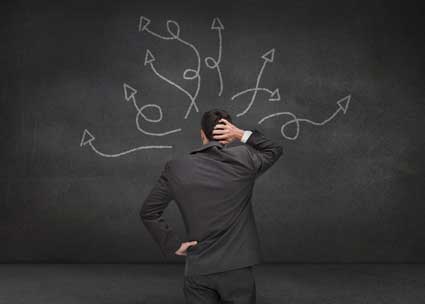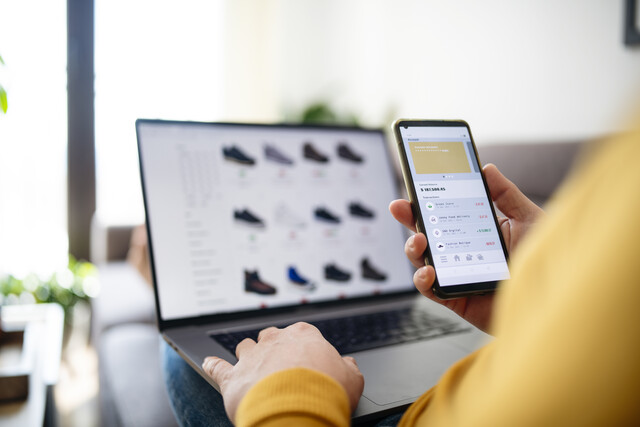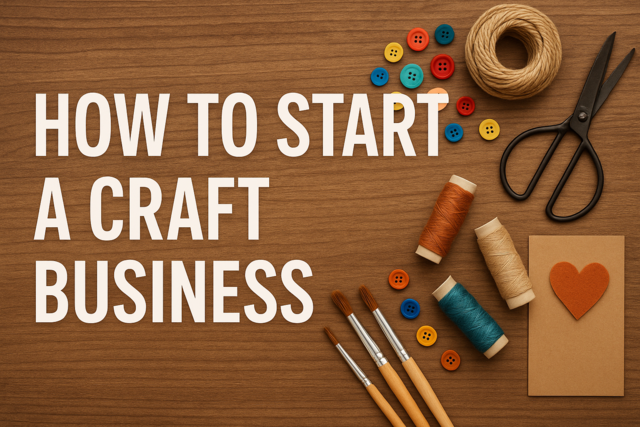
PayPal, like eBay, was founded in the 1990s. PayPal was one of the first types of online banking formats, a literal electronic bank that allowed people to transfer funds to and from their traditional or "regular" bank to a PayPal account. The eBay administration and users found that PayPal was one of the most universal forms of payment that offered a speedy, convenient, and safe online transaction format. It is obvious that the founders of eBay thought so, too. In 2002, eBay bought PayPal for approximately $1.5 billion.
PayPal, like eBay, was developed via a couple of innovative individuals. Max Levchin was a computer programmer originally from Ukraine. He immigrated to the United States and received a bachelor's degree in computer sciences from the University of Illinois. Levchin focused on encryption, creating secure electronic transaction environments.
These days, PayPal's worth is nudging increasingly closer to $10 billion. The company takes pride as one of the largest online payment and transaction systems in the world, with more than 50 million users in more than 40 countries. Believe it or not, PayPal transactions amount to nearly $50 million every day.
Benefits of Using PayPal for eBay Transactions
PayPal is considered one of the safest and most effective venues for completing transactions for both sellers and buyers on eBay. Using PayPal, sellers or buyers do not see the financial information of other individuals, such as that found on personal checks or credit cards.
In addition, setting up a PayPal account is easy and quick, and requires only the use of a user name and password for entry into the system. PayPal transactions are instantaneous, which ensures that your customers receive your products more quickly.

Both eBay and PayPal services offer recommendations that help resolve buyer or seller disputes or problems. Every eBay seller who accepts PayPal has a special PayPal logo found within the area of "Payment Methods.". Using PayPal, buyers can choose between electronic checks; automatic account debits; and Visa, American Express, Discover, and MasterCard services.
PayPal is accepted in more than 55 countries today, making it easier for international bidders to participate in auctions in the U.S. Credit card information is only known to the PayPal service and is not visible to the seller. As mentioned earlier, PayPal offers you the right to dispute any charges if items arrive damaged. If you are a verified member of PayPal, you are covered by the PayPal Buyer Protection Program.
Setting Up a PayPal Account
To open a PayPal account, you need to log on to PayPal's Web site at PayPal.com. On PayPal's home page, you will notice an account log-in bar on the left side. Below that, in a gray-shaded box, you will find a "New to PayPal?" sign-up link.
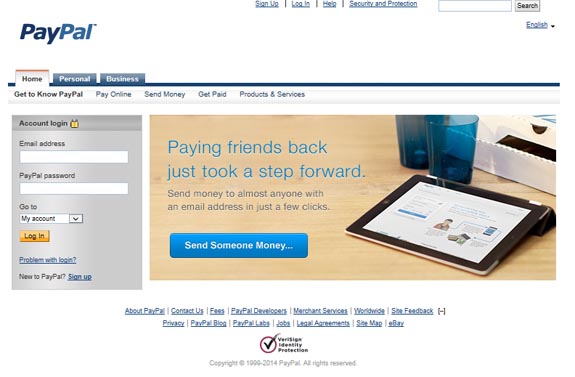
You will be asked whether you want to create a personal, premier, or business account. Buyers typically open a personal account, while sellers and individuals who wish to link and take advantage of business services, use a company or group name, or buy and sell frequently online should choose the business and/or the premier sign-up option.
For the sake of simplicity, we will walk you through creating a personal PayPal account. The procedure is the same for both premier and business sign-up options, with just a few extra details.
First, determine your country and your language by clicking the appropriate entry in the drop-down boxes. Then click the "Get Started" button.
You will be asked to provide an e-mail address, which you will use to log into your PayPal account. Also choose a secure yet easy-to-remember password. For safety's sake, try to combine uppercase, lowercase, and numerals in your password. You also will need to provide your legal name, physical home address, ZIP code, and state. A phone number is also required.
Finally, you will be asked to read and agree to the PayPal Privacy Policy and User Agreement. Once you do so, you are officially registered. Following initial registration, you will be asked to provide a checking account or credit card number, through which your PayPal transactions will be completed. Fully explore your options.
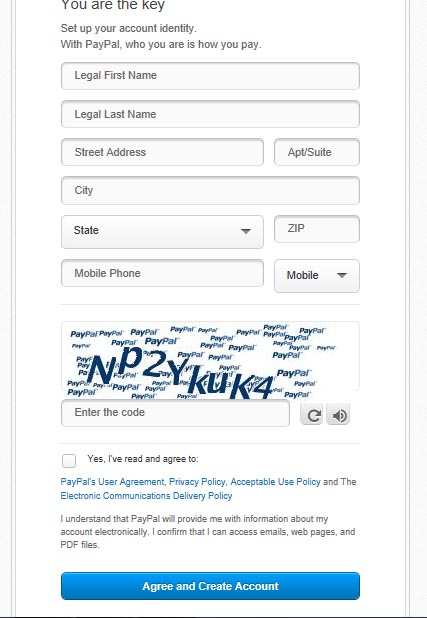
Conclusion
PayPal offers buyers and sellers one of the easiest and most secure methods for payment transactions coming or going. However, Internet security and safety are issues with which you should become familiar. Take the advice of information technology experts and occasionally change your user name and password to enhance your online purchasing security.
Now that you have set up your PayPal account and/or determined your payment or payments receivable options, you are ready to sell, receive payments for items sold, or buy items on eBay.
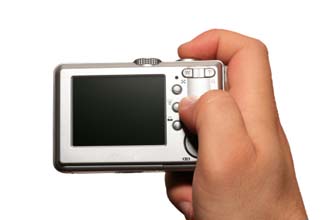
Introduction
In order to sell items on eBay, you have to create a seller's account. This process is just as easy as the process you went through to register and create a user name and password. However, there are a few extra steps you need to take to become a seller.
In this article, we will talk about how you can set up a seller's account, the importance of following instructions regarding photographs, and then offer you a seller's checklist that you can use as a "cheat sheet" for selling your first items. In no time at all, you can work your way up to being an eBay power seller!
Under the "How to Sell" tab on the eBay Web site, you will find the quick-start guide and even a video that instructs you step-by-step on how to sell items on eBay. The quick-start guide and the video for beginners provide easy-to-understand visuals and instructions on taking good photos, creating your seller account, selecting the best-selling format for your items, and other tips and tools.
- Log in to eBay with your user identification and password.
- Verify your registration information.
- Specify how you want to pay your seller's fees. For every item you list on eBay, eBay charges a very small amount called a listing fee.
- Decide how you want to get paid following a purchase.
By clicking the "Sell" link on the home page of eBay, you will be prompted what to do. If you have already registered, you will be asked to verify your information. You can list a debit card, checking account, or credit card number for verification purposes. This process is free and utilized merely to verify your identity during transactions through eBay's secure servers.
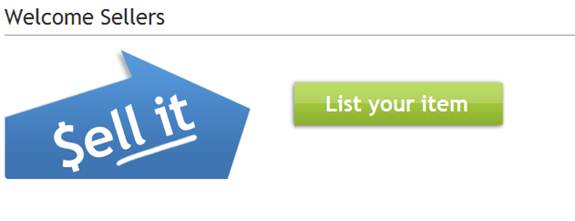
Remember that eBay charges for every listing and completed sale on its Web site. These fees are billed once a month to your debit or credit card, checking account, or PayPal account. You decide which. The amount of seller fees depends on the items you are selling and how much you are asking or how much you get from the item. Make sure that if you are selling a lot of items and you use a credit card, you have plenty of remaining credit open because you do not want eBay to decline any transaction because the fees exceed your available credit line.
Many successful eBay sellers opt to utilize a separate checking account for this purpose. This way, eBay debits your checking account instead of your credit card. If the fees are not too excessive, add the cost of the listing fee into the overall "Buy it Now" price or into your shipping and handling fees, but only if it does not exceed a few dollars.
Warning: It is illegal to charge excessive fees for shipping and handling. For example, if you determine that shipping your item costs $4, it is acceptable to add 50 cents or a dollar, but not $40. Use common sense. Do not destroy your future eBay business by sticking it to your customers.

Photos
The saying "a picture is worth a thousand words" is especially true on eBay. Customers want to see what they are buying. They want to know the size, shape, color, and other details, just as they would in a real shopping environment. For this reason, taking good pictures to post along with your item description is important in creating and developing eBay success.
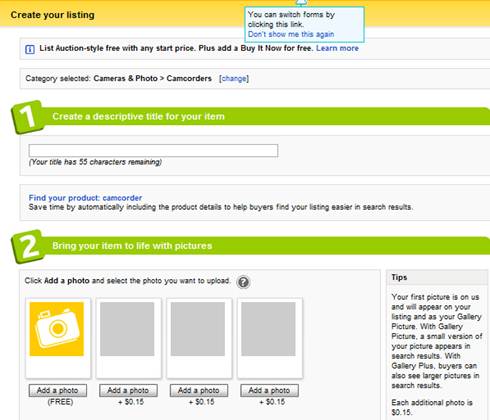
Note: The way you upload or post your photos to eBay depends on the media you are using: digital camera, flash drive, compact disc (CD), DVD-ROM, or scanning. Refer to the instructions offered on eBay to benefit from step-by-step instructions on posting your item photos onto your product listings page.
Be as descriptive as possible with your photographs and words. In real-time shopping, you are able to pick up an item, feel it, smell it, and try it on. On eBay, customers can only get a visual sense of your item or product. The qualities of your photographs are a key factor in encouraging people to bid on your items.
Also remember that in many cases, there may be hundreds, even thousands, of other individuals on eBay selling the same type of item you have listed, perhaps even the same make, model, or version. Yours needs to stand out. Your photographs can help you achieve this.
Take the time and make the effort to develop interesting yet accurate photographs of your items. Create high-quality images and make sure lighting is adequate. Browse some items on eBay and take a look at photographs others have taken. You will find the good, the bad, and the ugly.
Instead of grabbing photos from public domain imagery galleries such as those found on Google, create your own photo of your product, especially if it is something that you have owned.
Even if your item is a Blackberry, iPhone, or other piece of common technology, take the time to create a nice background and take several views of the item to place with your eBay listing. In some cases, you will want to leave items in a box, especially if you are selling them as mint items or as collectibles.
Take several digital photographs of the item with different backgrounds, lighting, and shadows. Download the pictures on your computer and judge them by their quality and clarity. Buyers on eBay use their eyes to shop, and your photos will literally be worth a thousand words. Your description helps, but your description is found below the photo and the bidding information. You have about five seconds to either attract or disappoint a potential buyer before she or he moves on. Make the most of those five seconds.
When it comes to taking photographs, remember these helpful hints about the type of camera you use to obtain your photographs:
- Strive for at least 800x600 resolution.
- Choose a camera with automatic optical zoom.
- Use a camera function that controls shutter speed automatically.
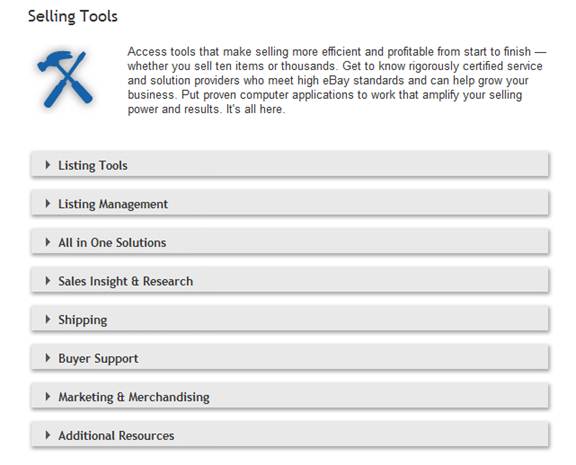
Seller's Checklist
An item-by-item checklist for sellers can be found in the eBay "Tools for Sellers" section of the Web site. In a nutshell, Part One of this seller's checklist includes:
- choosing your category;
- choosing your listing option;
- creating a listing title.
Part Two of the seller's checklist includes:
- your item description and the history of the item, when applicable;
- the condition of your item;
- any additional information that a seller might want to know. This information can include your return policy, payment information, or shipping options.
Part Three of the seller's checklist includes categories that help you determine:
- pricing;
- taking, preparing, and listing photos;
- payment methods;
- payment instructions;
- shipping details.


